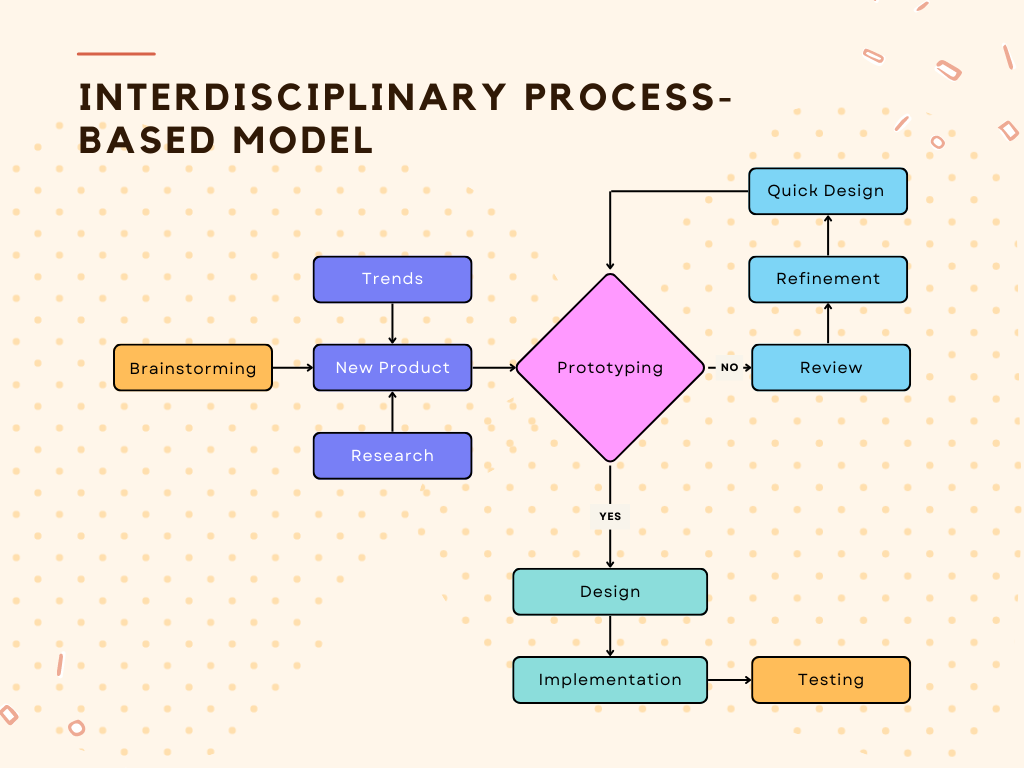
Home / Student Tasks / Interdisciplinary Process-Model Task
INTERDISCIPLINARY PROCESS-MODEL TASK
A process model can be used to provide a structured set of steps for solving an interdisciplinary problem. Such a model can guide students in exploring the disciplines relevant to a problem, the structure of the problem-space and what steps and questions to address in order to facilitate integration.

This task is most suitable for:
Interactions
Single (monodisciplinary) or mixed (interdisciplinary) groups
Degree of Integration
Multidisciplinary or interdisciplinary
Problem structure
Structured or open-ended problems
Skill targets
Interdisciplinary problem-solving
- Metacognitive Skills (0/7)
- Interdisciplinary Problem Solving Skills (5/7)
- Team Skills (4/9)
Interdisciplinary process model tasks
A well-developed tool can scaffold students through the steps they need to solve an interdisciplinary problem. By doing so instructors can present a logical strategy and ordering of questions students should deal in order to achieve an interdisciplinary outcome. And in doing so some of the vagaries and open-endedness of engaging in interdisciplinary problem-solving can be managed. A tool or task in these respects could cover for example the 1) formulation of a problem in terms amenable to the involved fields, 2) assignment of tasks to group members 3) the selection of approach methods 4) plan for integrating or linking methods 5) plans for evaluating the outcome.
Students may need to work backgrounds at times and revise previous steps during planning, as well as take into account non-epistemic factors, such as time scales over which different methods operate, the resources required by each group, and so on.
Ready-made Resources
A relatively comprehensive process-based planning model can be found in chapter 10 of this book (Repko et al., 2016)
Universal tool usable for students & researchers to map out relationships between disciplines and planning.
Potential Uses
-
Interdisciplinary Planning and Scaffolding
For this use the task is directly applied for helping student plan their activities, and then guiding their steps in order to optimize their ability to solve a problem with interdisciplinary depth.
-
Evaluating/Reflecting on Interdisciplinary Engagements
Student can use an initial plan as a departure point for reflecting on what they might have learned about interdisciplinarity given their initial expectations. Such a rubric may include a reflective component at the end.
Further Reading
Description of paper by Repko et al.:
Repko, A. F., Szostak, R., & Buchberger, M. P. (2016). Introduction to interdisciplinary studies. Sage Publications.
